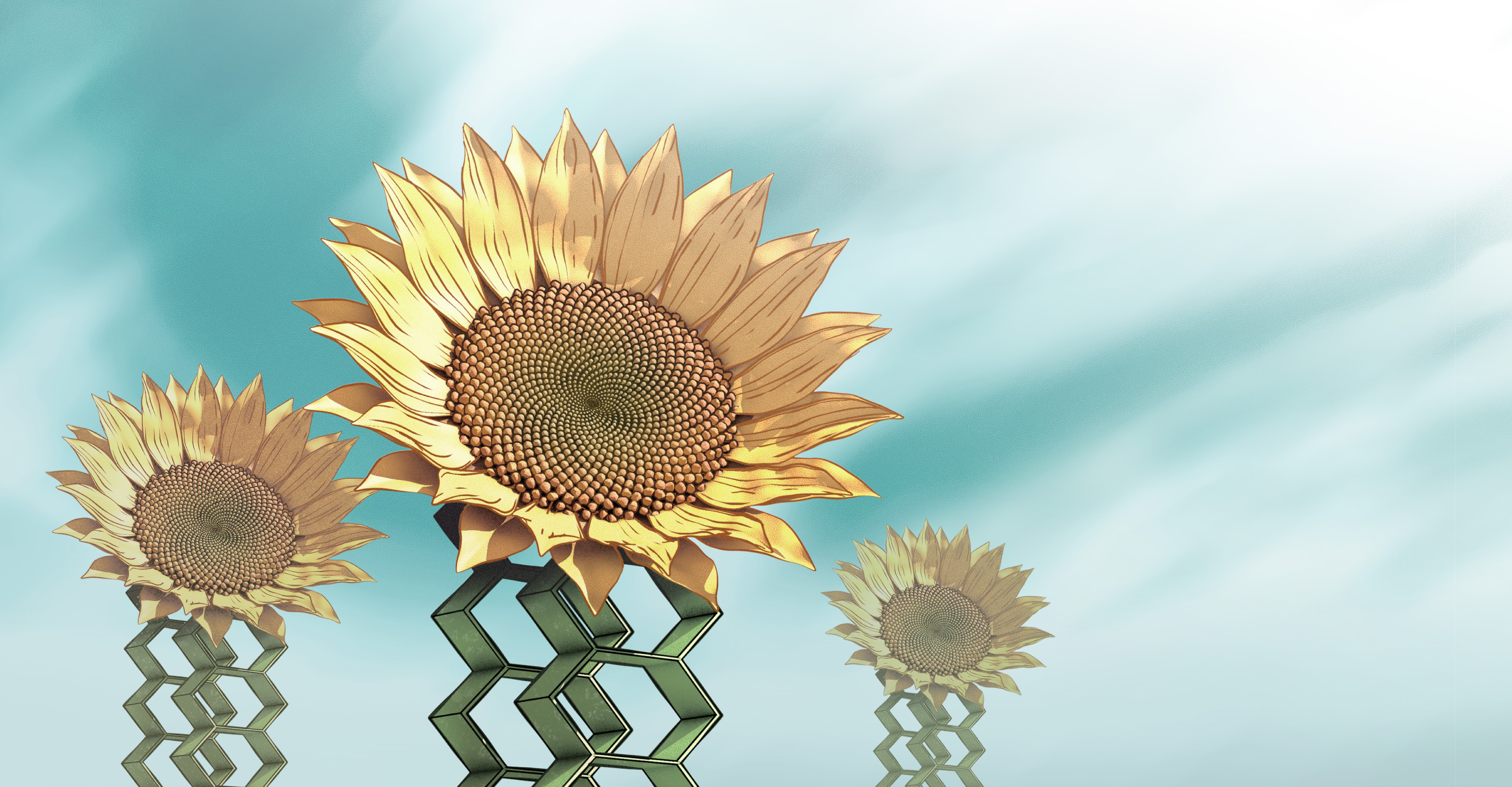Salute to the sun

Just as sunflowers turn to face the sun throughout the day, KAUST researchers have developed solar panels that can readjust their position to track the sun’s movement. Illustration by Xavier Pita
Solar panels that bow toward the rising sun and readjust their position throughout the day to track its movement have been developed by a multidisciplinary team of interns and their advisor at KAUST, electrical engineer Nazek El-Atab. The solar-tracking technology does not consume electrical energy but significantly increases the energy output of the solar cells it attaches to.
"We always look for projects that address real challenges faced in the region and the world," El-Atab said. "Solar is the most viable renewable energy source to enable the transition away from conventional carbon energy."
A lot of research is focused on improving the efficiency of solar panels. However, this does not address the fact that when the sun is low in the sky and its rays strike the panel at an angle, only a fraction of the energy is produced compared to when sunlight strikes the panel from directly overhead.
Solar cells have been mounted on tracking systems that follow the sun, but these have generally been bulky mechanical systems incorporating light sensors, microprocessors and motors. "These big heavy systems are costly, consume energy and require maintenance," El-Atab said. "They have limited application."
El-Atab had a considerably simpler concept in mind. "One of the main fields my group focuses on is 4D printing," El-Atab says. "Similar to 3D printing, 4D printing uses smart materials that can interact with the environment and change their shape."
The printed object shape-shifts in a predetermined manner in response to a specific stimulus, such as heat, humidity or light.
"Our idea is to 3D print legs for solar cells using materials that interact with the sunlight," El-Atab said. "When light hits this material, it contracts."
Sunlight hitting the panel from one side would cause the sun-exposed leg to shorten, tilting the panel toward the sun and increasing its power output. To develop the concept, El-Atab assembled a team of interns with the necessary spread of skills.
"The project required some physics, some electrical engineering and some mechanical engineering, so we found students with these three backgrounds," she said.
Physics student Serhii Tytov from Ukraine, Saudi mechanical engineering student Fhad Al-Modaf and electrical engineering student Shicheng Su from China collaborated on the project. Their leg design is based on a stack of hollow cylinders. When exposed to sunlight, each cylinder's shape changes from a circular to an elliptical profile, shortening the leg. The latest design revision came with the help of Tytov's permanent marker pen.
"The material is white, and he got this idea of coloring it black," El-Atab said.
The pen offered a quick way to test the idea, and the hunch paid off. The darkened material changed shape almost twice as quickly as the white original when exposed to light.
"We are now working on adding black coloring to the material as we print it," El-Atab said.
In testing, solar panels fitted with the 4D printed legs faithfully tracked the sun.
"We showed that if the sun tilts by around 30 degrees, a fixed solar cell would lose around 30 per cent of the power output, compared to only six percent with our solar tracker," El-Atab said. "The six percent loss means there is still room for improvement!" she added.
With all three project interns soon to join KAUST as full-time master's or Ph.D. students in El-Atab's lab, the project's future looks bright.

